The reactivity of zirconium on silicon nitride enhances the conversion of propane into propylene, a key commodity chemical needed to make polypropylene. This finding hints at the reactivity researchers might achieve with other nontraditional catalysts.
Tag: X-Ray Science and Technology
Ushering in a brilliant future at the Advanced Photon Source
Dignitaries and luminaries attended a dedication ceremony for the upgraded Advanced Photon Source at Argonne National Laboratory. The new facility will open new doors to discovery.
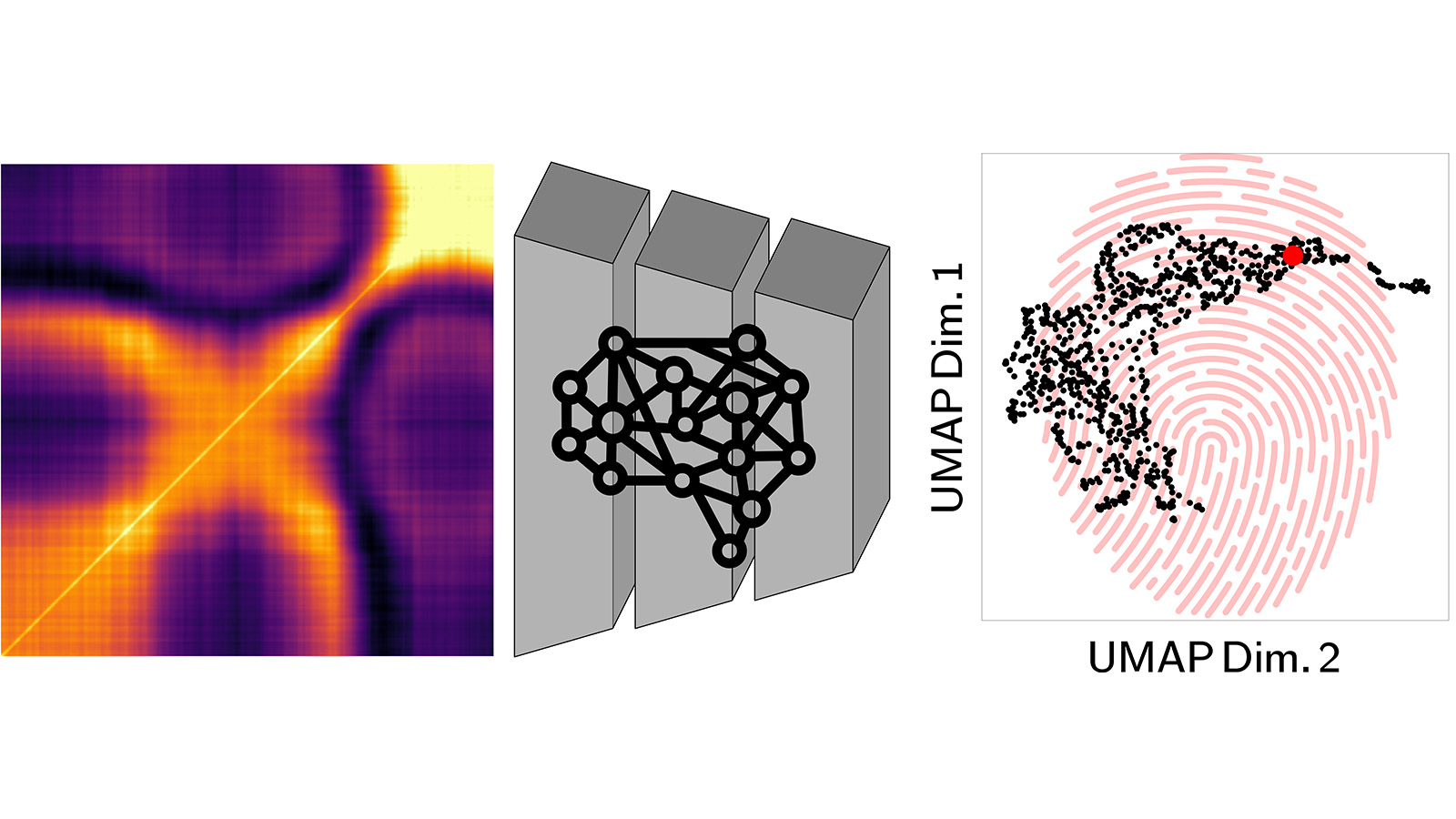
Scientists develop new artificial intelligence method to create material ‘fingerprints’
Researchers at the Advanced Photon Source and Center for Nanoscale Materials of the U.S. Department of Energy’s Argonne National Laboratory have developed a new technique that pairs artificial intelligence and X-ray science.
Burak Guzelturk recipient of 2024 ACS Nano Lectureship Laureate
Argonne National Laboratory physicist Burak Guzelturk is one of the 2024 recipients of the ACS Nano Lectureship. The award recognizes early career investigators in the field of nanoscience and nanotechnology.
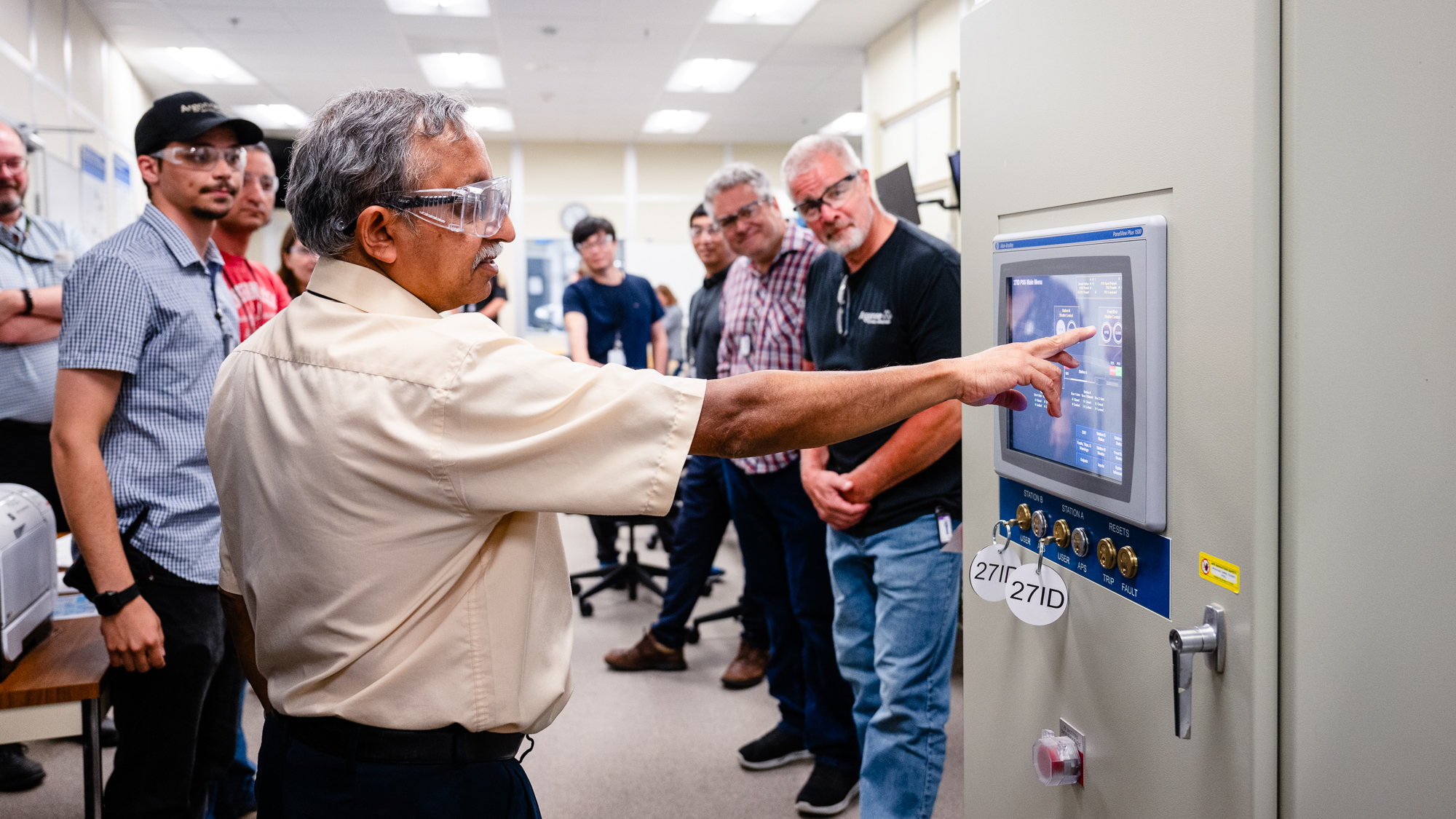
Shine on: Upgraded Advanced Photon Source sees first X-ray light for science
After a decade of planning and a year of removal, installation and commissioning, the upgraded Advanced Photon Source has delivered its first photons to a scientific beamline. This paves the way for the start of a new era of scientific discovery at the upgraded facility.
Keane wins 2024 Gopal K. Shenoy Excellence in Beamline Science Award
Denis T. Keane, of Northwestern University, was named the 2024 recipient of the Gopal K. Shenoy Excellence in Beamline Science Award which recognizes beamline scientists for their contributions to research or instrumentation at the Advanced Photon Source.
Scientists pioneer autonomous robotic method for studying liquids suspended in air
Researchers at the U.S. Department of Energy’s Argonne National Laboratory have used robots and artificial intelligence to dramatically speed up data collection and analysis in X-ray studies of liquids.
Yuting Luo receives 2024 Rosalind Franklin Young Investigator Award
Yuting Luo, of Johns Hopkins University, was named the 2024 recipient of the Rosalind Franklin Young Investigator Award given by the Advanced Photon Source (APS) user organization, which recognizes important scientific or technical accomplishments at the APS by a young investigator.
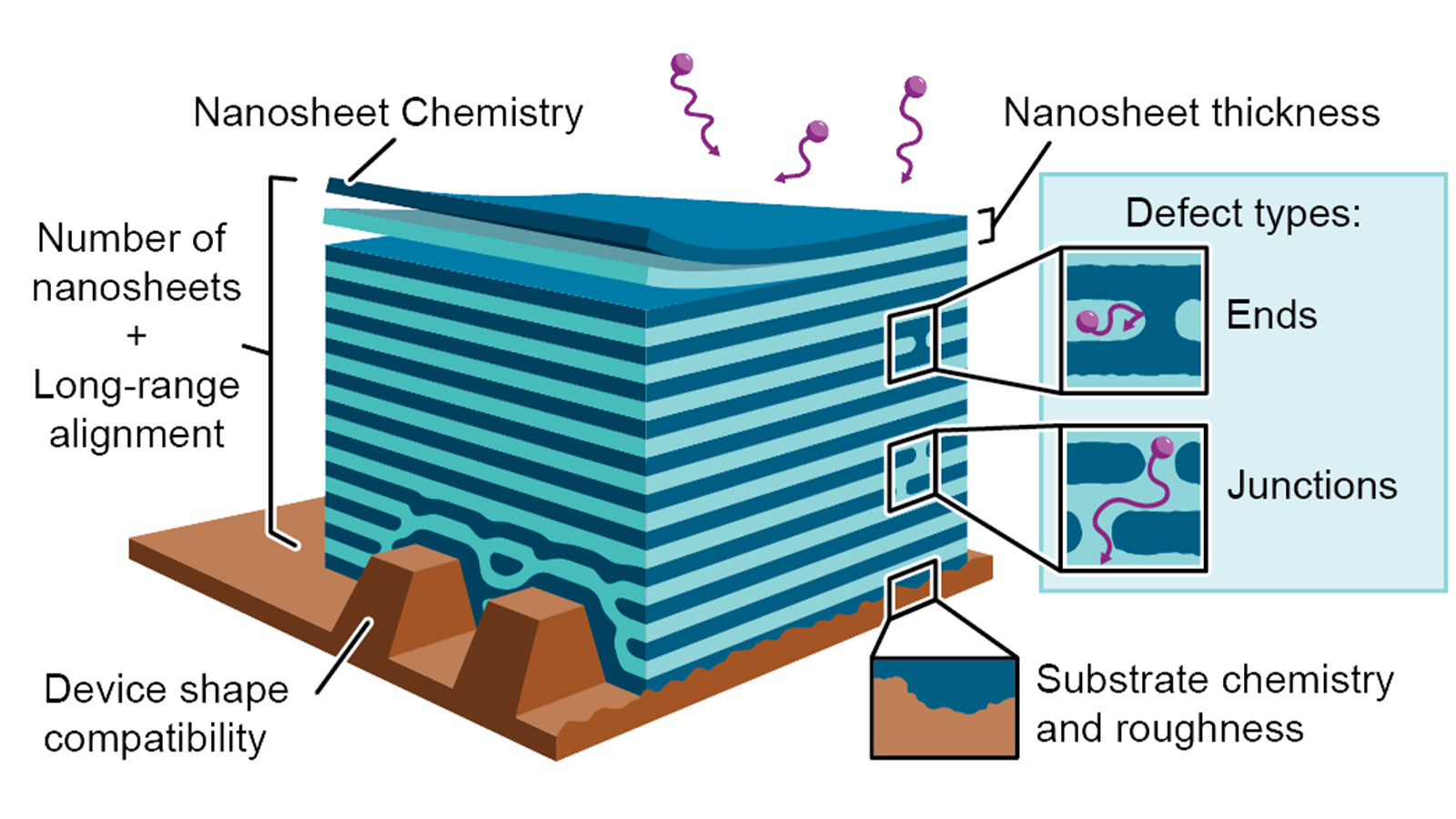
Argonne scientists help scale up nanomaterials for sustainable manufacturing
Scientists using Argonne’s Advanced Photon Source have developed a multipurpose nanomaterial to aid in sustainable manufacturing.
Media Tip: Argonne’s Advanced Photon Source to accelerate biological and environmental research
In October 2023, the Advanced Photon Source (APS), a U.S. Department of Energy (DOE) Office of Science user facility at DOE’s Argonne National Laboratory, officially launched a new initiative to expand biological and environmental research at the world leading X-ray and analysis facility.
Using artificial intelligence, Argonne scientists develop self-driving microscopy technique
Argonne researchers have tapped into the power of AI to create a new form of autonomous microscopy.
Argonne to recycle magnets from Advanced Photon Source in new physics experiment at Brookhaven
Argonne is recycling 700 magnets as its Advanced Photon Source undergoes an upgrade, and the old magnets will be used for the Electron-Ion Collider.
Nina Andrejevic creates better tools to quickly characterize materials
Understanding big datasets requires better analytical models, says the Maria Goeppert Mayer Fellow.
DOE awards a SLAC-led research team $12 million to help improve response time to dangerous pathogens
Researchers with the Department of Energy’s SLAC National Accelerator Laboratory and other institutions have been awarded $12 million in funding to help accelerate society’s response to emerging pathogens by improving X-ray science technology and processes.
Three Argonne scientists receive 2023 DOE Early Career Awards
Argonne researchers received three DOE Early Career Awards, which will help early-career researchers establish themselves as experts in their fields.
Researchers use Argonne X-rays to find the best antibodies
Antibody therapies are only effective if the antibodies do what we want them to do. This research can help scientists determine if an antibody is likely to stick to something other than the intended target, which should lessen the amount of time wasted with overly sticky antibodies.
Unveiling the quantum dance: Experiments reveal nexus of vibrational and electronic dynamics
Scientists have demonstrated experimentally a long-theorized relationship between electron and nuclear motion in molecules, which could lead to the design of materials for solar cells, electronic displays and other applications that can make use of this powerful quantum phenomenon.
Speaking my language: Robert Winarski’s background helps him coordinate beamline installation for the Advanced Photon Source Upgrade
With the year-long shutdown underway, the Advanced Photon Source Upgrade project is in the midst of building seven new beamlines, constructing the infrastructure for two more, and updating several more existing beamlines. Robert Winarski is coordinating all of this work, and his background as a scientist who has constructed beamlines is key to his success.
A first step to designing better solid-state batteries
Researchers from Argonne and Northeastern University in Boston characterized reactions in all-solid-state lithium batteries.
Scientists use X-ray beams to determine role of zinc in development of ovarian follicles
Researchers from Argonne, Michigan State University and Northwestern University used Argonne’s Bionanoprobe beamline to look at the concentration of zinc in egg cells.
Argonne aids in the fight against one of the world’s most ubiquitous human viruses
With the help of Argonne National Laboratory, Epstein-Barr Virus researchers identified a viral protein as a target for antiviral and vaccine development, as well as an antibody that might benefit the immunocompromised.
Cai wins 2023 Gopal K. Shenoy Excellence in Beamline Science Award
Zhonghou Cai is the 2023 recipient of the Gopal K. Shenoy Excellence in Beamline Science Award. The annual award recognizes active beamline scientists at the Advanced Photon Source for significant contributions to research or instrumentation and support of the beamline user community.
Dixit receives 2023 Rosalind Franklin Young Investigator Award
Marm Dixit, of Oak Ridge National Laboratory, was named the 2023 recipient of the Rosalind Franklin Young Investigator Award given by the Advanced Photon Source user organization which recognizes important scientific or technical accomplishments at the facility by a young investigator.
Argonne’s Advanced Photon Source prepares for its renewal
The Advanced Photon Source is about to undergo a comprehensive upgrade, one that will require a one-year pause in operations. When the APS returns to operation in 2024, its brighter X-ray beams will lead to new breakthroughs in many different areas for decades to come.
Bright lights, big data: how Argonne is bringing supercomputing and X-rays together for scientific breakthroughs
Argonne’s newest supercomputer, Polaris, is up and running, and scientists using the Advanced Photon Source are already seeing faster data analysis. While the combination is paying dividends now, it points toward an upgraded APS and an even better supercomputer called Aurora.
Using X-rays and additive manufacturing to print tough materials
In a breakthrough for industrial manufacturing, scientists using the resources at Argonne were able to consistently produce 17-4 PH steel, one of the world’s toughest materials, using X-rays and the additive manufacturing process.
Scientists create antibody ‘cocktail’ to fight deadly Lassa virus
A group of researchers have used the Advanced Photon Source to look at monoclonal antibodies to subvert the “shield” of the Lassa virus, potentially paving the way for new therapies.
Researchers unveil new AI-driven method for improving additive manufacturing
Argonne’s Advanced Photon Source helped scientists develop a new technique for detecting and predicting defects in 3D printed metals.
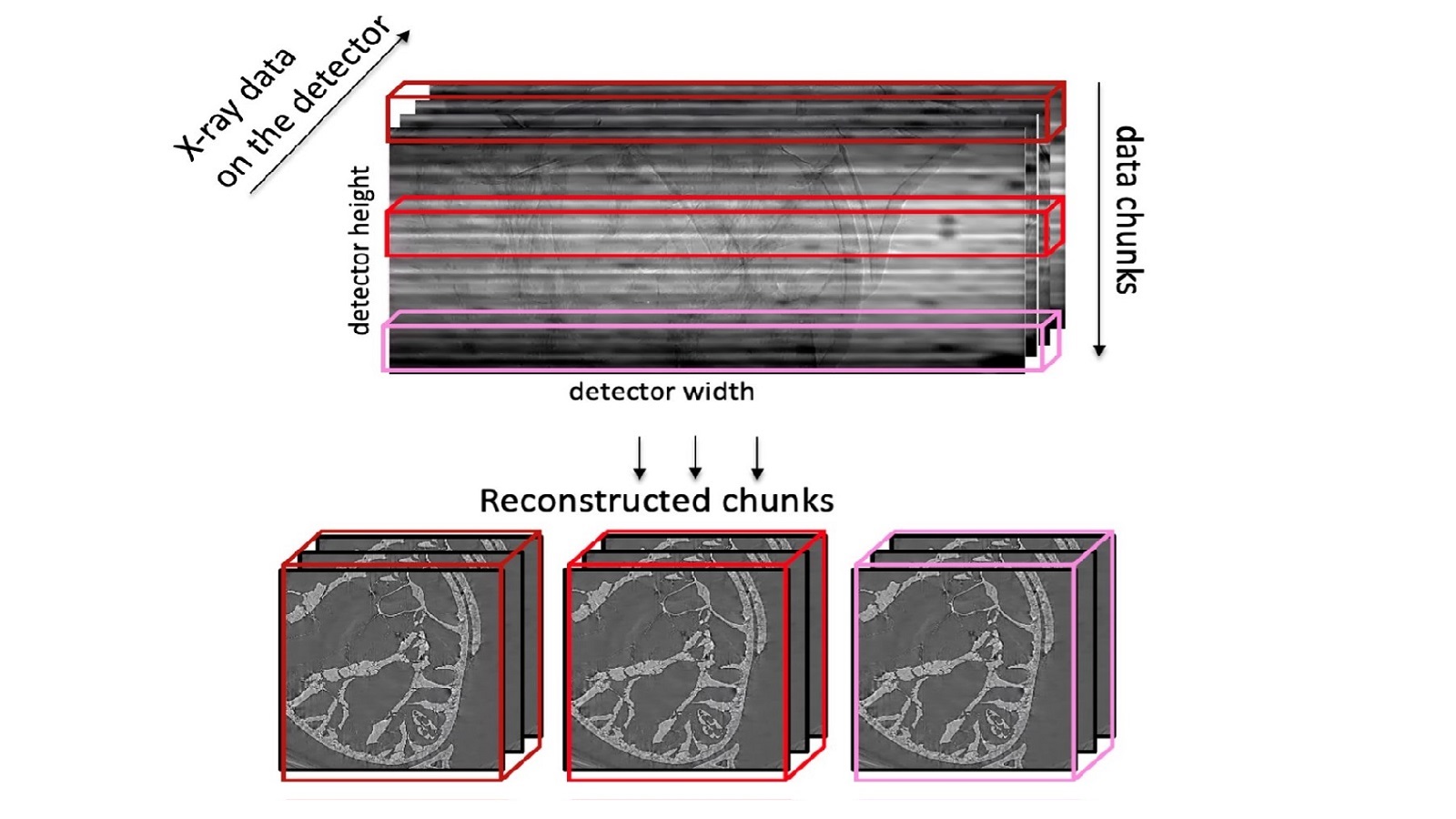
Argonne scientist develops new X-ray data reconstruction method
A new software package developed by Argonne will help scientists reconstruct data from X-ray tomography experiments at the Advanced Photon Source up to 30 times faster than current methods.
Scientists develop more humane, environmentally friendly battery material
Scientists have developed a new lithium-ion battery cathode that is free of cobalt, making it more attractive geopolitically.
Argonne Distinguished Fellow Linda Young to receive honorary doctorate
Linda Young, an Argonne Distinguished Fellow in the Chemical Sciences and Engineering division will receive an honorary doctorate from Uppsala University in Sweden on Jan. 27.
Argonne announces 2022 Postdoctoral Performance Awards
Nine postdoctoral appointees were recognized with Postdoctoral Performance Awards.
Scientists enhance stability of new material for solar cells
Scientists at the University of Missouri used Argonne’s Advanced Photon Source to identify the structure of a perovskite material grown using chemical vapor deposition, potentially representing a breakthrough for solar cells.
Media Tip: Shock to the system: Using electricity to find materials that can learn
Is it possible for nonbiological materials to “learn”? The answer is yes. Scientists used the Advanced Photon Source, a U.S. Department of Energy (DOE) Office of Science user facility located at the DOE”s Argonne National Laboratory, to observe a nonliving material mimic behavior…
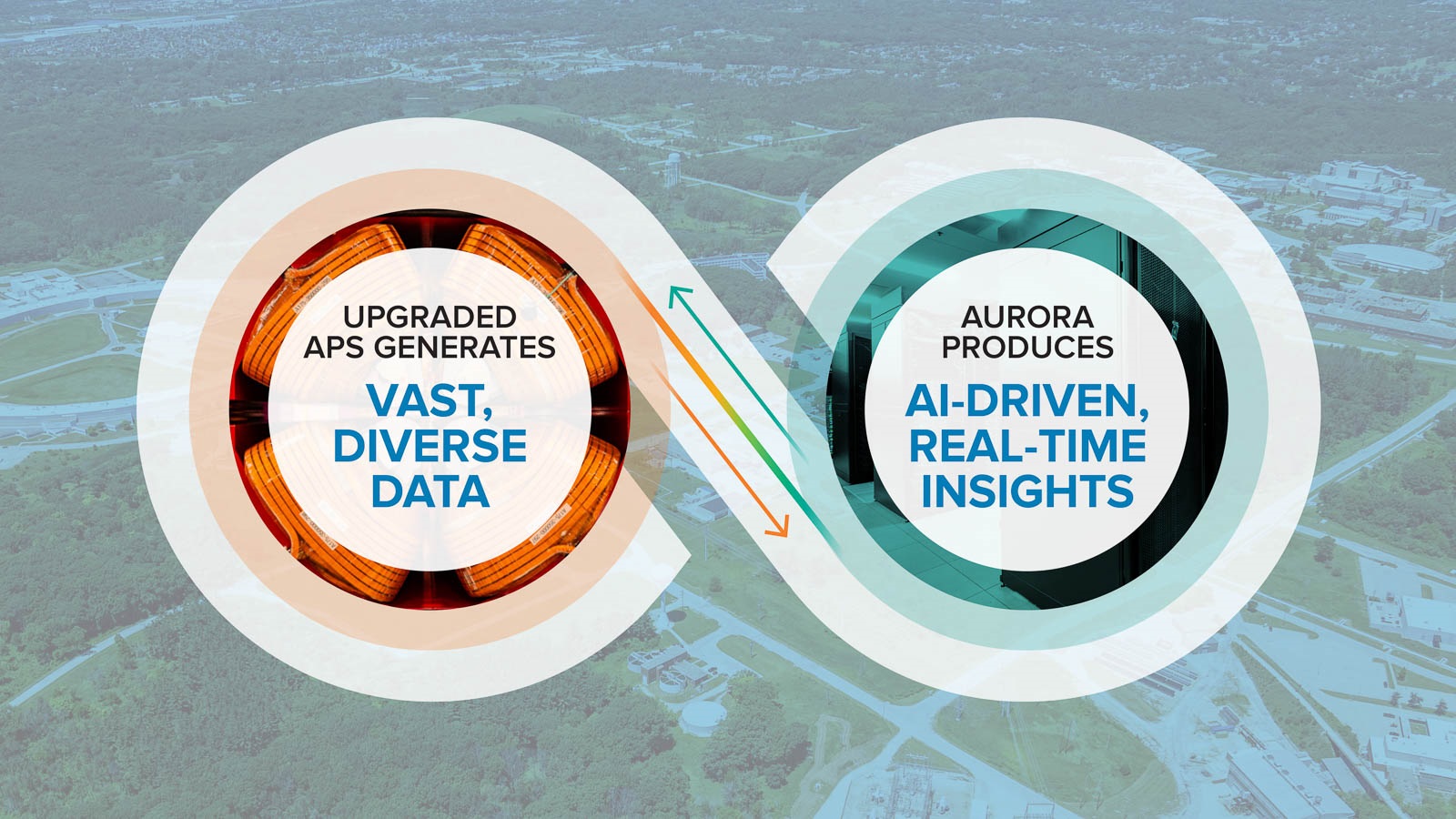
Aurora and the upgraded Advanced Photon Source to power discovery at Argonne
Argonne is creating a supermerger between its new Aurora supercomputer and upgraded Advanced Photon Source. The combined data collection and computing power will enable ultrafast data analysis, advance discovery time and unlock new science.
Secrets from space: Advanced Photon Source helps illuminate the journey of a 4 billion-year-old asteroid
An international collaboration of scientists has published results of their studies into the makeup and history of asteroid 163173 Ryugu. These results tell us more about the formation of our solar system and the history of this nearby neighbor.
Six ways the Advanced Photon Source is making the world better
Pivotal discoveries at Argonne’s Advanced Photon Source make the world better every day. Here are six that help us, inspire us and add to the promise of a brighter tomorrow.
Hitting a new peak: Scientists enhance X-ray data analysis with artificial intelligence
Scientists at Argonne’s Advanced Photon Source have created a new method using artificial intelligence to speed up the analysis of X-ray diffraction data.
Scientists find strange black ‘superionic ice’ that could exist inside other planets
Scientists have discovered a way to recreate the ice that exists inside planets like Neptune and Uranus, ice which forms at extremely high temperatures and pressures.
Let’s get small: New Argonne method greatly improves X-ray nanotomography resolution
Using X-rays to study batteries and electronics at nanometer scales requires extremely high resolution. Argonne scientists led an effort to build a new instrument and devise a new algorithm to greatly improve the resolution for nanotomography.
Bringing discoveries to light: X-ray science at Argonne
The Advanced Photon Source allows an intricate view of everything from proteins to nuclear fuel. With a planned upgrade, it will become even more powerful.
Now in 3D: Deep learning techniques help visualize X-ray data in three dimensions
A team of Argonne scientists has leveraged artificial intelligence to train computers to keep up with the massive amounts of X-ray data taken at the Advanced Photon Source.
A biological fireworks show 300 million years in the making
Scientists using the Advanced Photon Source have determined that amphibian eggs release showers of zinc upon fertilization, just like mammalian eggs. This research could have implications for human fertility studies.
Advanced Photon Source helps reveal how antibodies bind a molecule linked to cancer
Researchers have developed antibodies that can bind to phosphohistidine, an unstable molecule that’s linked to cancer. To learn how the two bind together, the team turned to the powerful X-rays at Argonne’s Advanced Photon Source. These new insights into its structure will help scientists design better antibodies for potential treatments.
Unlocking the secrets of Earth’s early atmosphere
Research partly conducted at the Advanced Photon Source helped scientists discover the composition of Earth’s first atmosphere. What they found raises questions about the origin of life on Earth.
Little swirling mysteries: New research uncovers dynamics of ultrasmall, ultrafast groups of atoms
Exploring and manipulating the behavior of polar vortices in material may lead to new technology for faster data transfer and storage. Researchers used the Advanced Photon Source at Argonne and the Linac Coherent Light Source at SLAC to learn more.
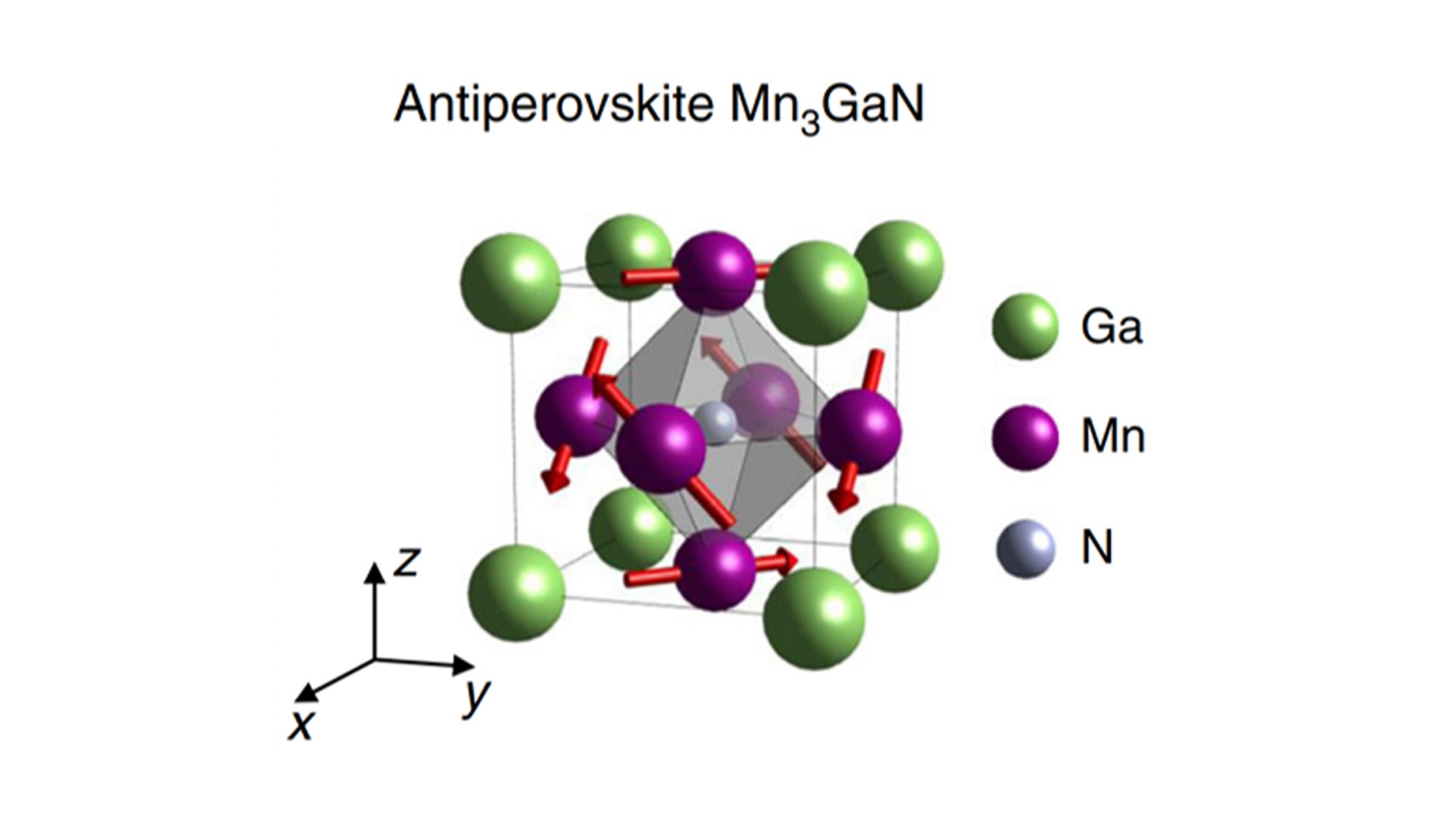
A new spin on energy-efficient electronics
Researchers are harnessing the power of Argonne’s Advanced Photon Source to test new materials for use in spintronics. This emerging field uses electron spin instead of charge, allowing manufacturers to make smaller and more efficient electronic devices.
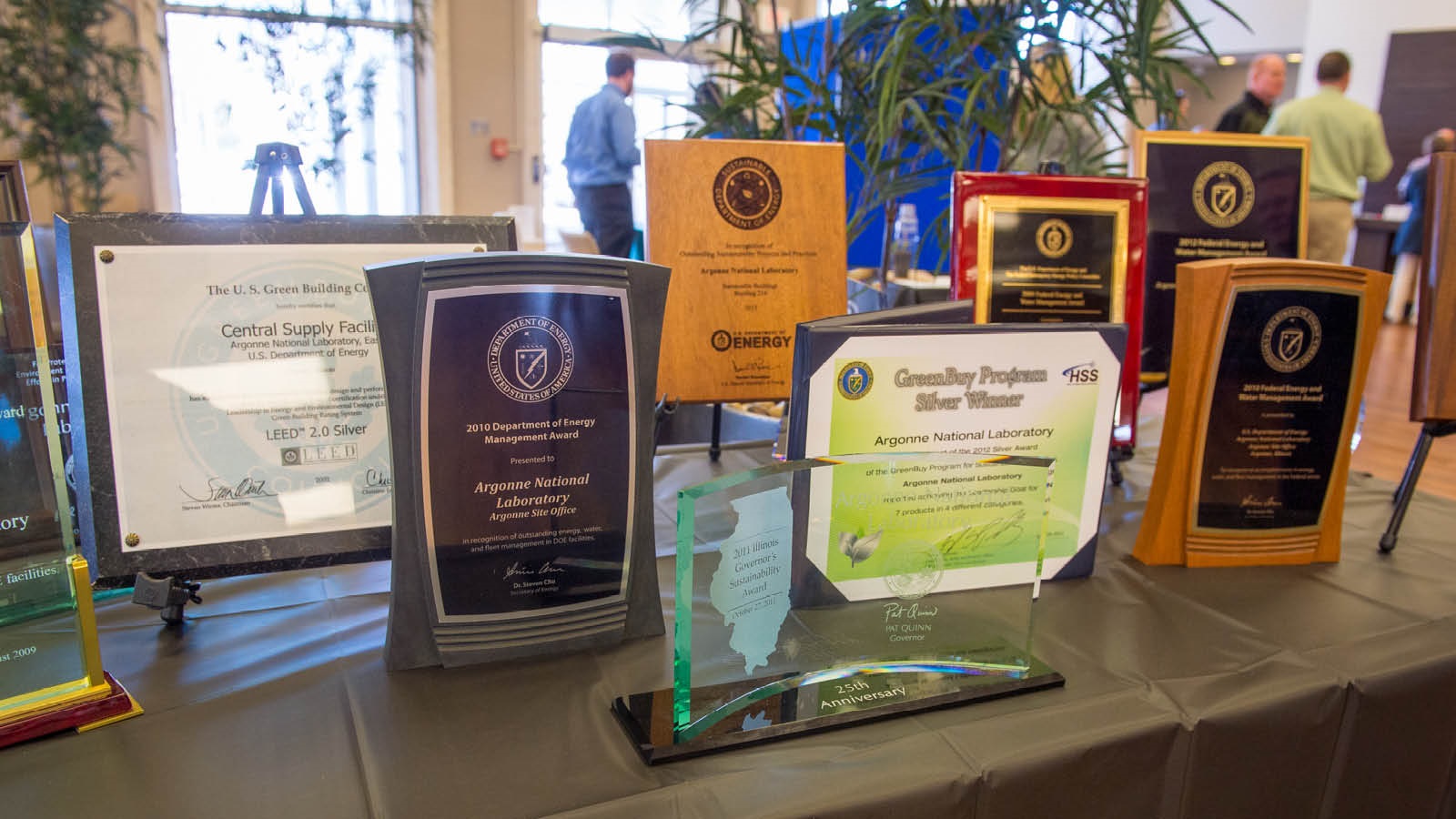
Argonne’s 2021 Maria Goeppert Mayer Fellows bring new energy, promise to their fields
The Department of Energy’s Argonne National Laboratory is proud to welcome five new FY21 Maria Goeppert Mayer Fellows to campus, each chosen for their incredible promise in their respective fields.

Tough, yet tender: Scientists firm up research on durable hydrogels
The new material, which the Advanced Photon Source helped characterize, is strong yet stretchable, and could be ideal for creating artificial tendons and ligaments for prosthetics and robotics.

Argonne’s first Black director reflects on science, inequality and a new honor
Walter Massey, the lab’s first Black director, looks back on his time at Argonne and discusses the inequities of minorities in science in light of a new Argonne Fellowship named for him.